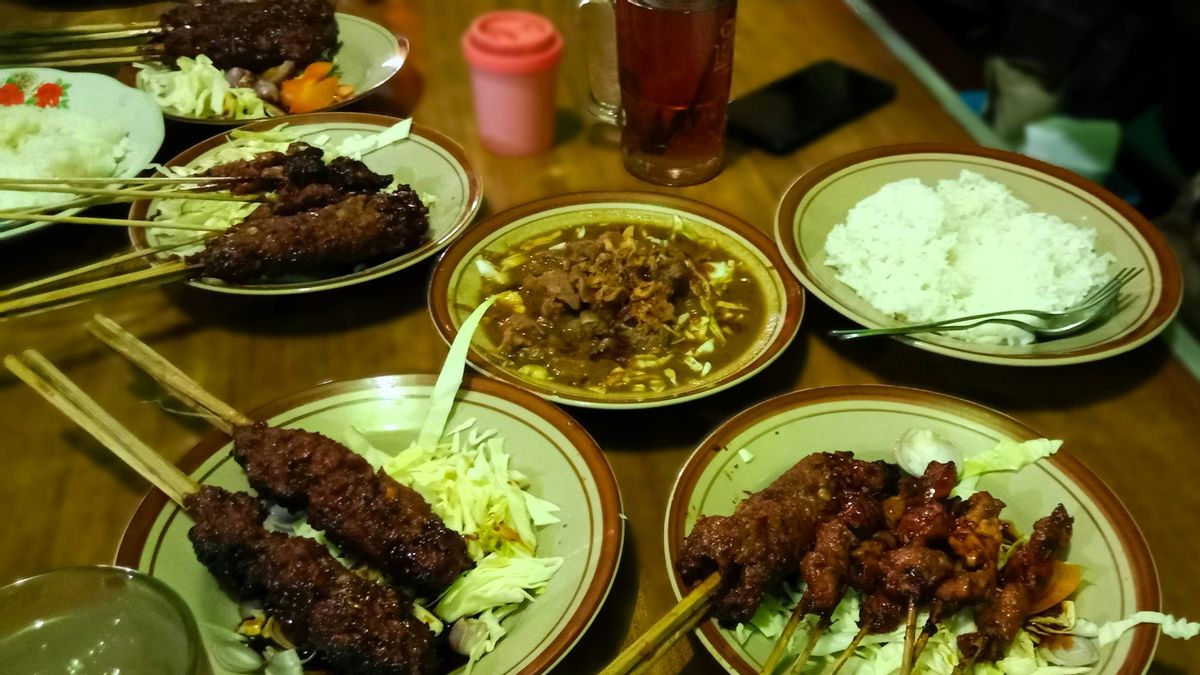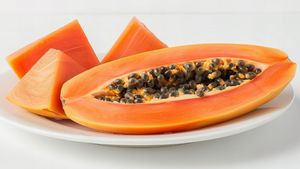Sate is a typical Indonesian dish which of course many people like it. But did you know that the type of satay in Indonesia is apparently not just one? Curious? Let's discuss it!
With the same types and tempting tastes, satay has teased people's tongue around the world.
Starting from chicken satay, goat satay, fish satay, shells satay, to rabbits satay, everything is an inseparable part of Indonesia's culinary wealth.
Generally, the various meats will be stabbed with sharp bamboo stabs, then burned to the point of perfect ripeness. After that, the satay will be served in a plate along with ketupat or lontong, and watered with a typical peanut or soy sauce.
To identify more about various types of Indonesian satay, which are so diverse, follow the following discussion:
I. Sate Madura
Sate Madura is a very famous satay dish and comes from Madura Island, East Java. Sate Madura is generally spiced with ground beans that are smoothed, petis and shallots. For his presentation, satay sucara will be served with soy sauce, rice cake, and stir. Quoted from several sources, the origin of satay Madura comes from the story of Arya Panole which is served with meat served with lidies by Batara Katong's older brother from Ponorogo. Not only adopting satay dishes from chicken meat and goat meat, he also adopted clothes worn by warok which were then brought to the madura area.
II. Sate leap
The satay fly is a unique satay from Madura Island, precisely from the Pamekasan area. The term satay fly is pinned because the meat cut is smaller than the usual satay, so that after burning it looks black and small like a fly. This is the reason for the stab at the fly satay not to use bamboo, but to use a smaller lidi so as not to damage the meat cut.
III. Sate Lilit
Sate Lilit is one of the typical Balinese satay dishes which is very popular because of its distinctive form. As the name suggests, the process of making satay is not by the method of stabbing but is wrapped in bamboo blades or cassava. The meat used as satay material varies from fish meat, chicken, cows, goats, to pigs. The meat that has been smoothed after that is given spices so that it gives rise to spicy flavors even though it is not served with soy sauce or beans like other types of satay. As culinary delights that are close to local culture, satay lilits are also sometimes used in religious rituals.
IV. Sate Klatak
Sate Klatak is a traditional Indonesian dish from Pleret, Yogyakarta. This dish consists of goat meat peppered with salt and pepper, then stabbed into an iron satay stab, and burned over an open fire. This way of stabbing ensures that all meat is cooked evenly. After ripe, satay Klatak is generally served with spicy curry sauce known as sugary.
SEE ALSO:
V. Sate Padang
Sate Padang is a typical Minang culinary dish, especially from the Pariaman area, Padang Panjang. Quoted from the Kemendikbud page, it is not known when satay Padang will be found or made for the first time. Typical characteristics of satay Padang are made of meat, tongue, or beef relief with a spice-rich aroma and slightly spicy.
VI. Sate Kerang
Sate Kerang is one of the typical culinary delights of Medan, North Sumatra, which is often found in stalls. Sate shells have spices that taste at first glance similar to rendang flavors. Large, rasal meat that is thick and soft with a little spicy taste makes many people like it. Not infrequently, the satay of shells is used as souvenirs brought by travelers after visiting the city of Medan.
VII. Sate Maranggi
Sate maranggi is a typical dish of satay in West Java, to be precise in the Purwakarta area. The basic ingredients of satay maranggi are beef or goat peppered with coriander, shallots, garlic, salt, and soy sauce. After being burned on charcoal, satay maranggi will be served along with stirs, sambal tomatoes or chili oncom, and rice.
VIII. Sate Kelinci
Sate rabbits are one of the typical dishes of satay in Central Java that can be found in the Tawangmangu and Banyumas areas. Rabib satay is almost the same as chicken satay, which is served with rice cake and watered with sweet and savory peanut spices. As an addition, the above will be added to the sprinkle of fried onions and if you want it to be spicy, it will also be sprinkled with red cayenne pepper slices. The difference between rabbits satay and chicken satay is found in the texture of the meat. Chicken satay is softer, while rabbits satay is more chewy. Sate rabbits are also known to be a little fat so low cholesterol and friendly for adibet rider.
IX. Sate Kere
Sate kerek is also one of the typical satay dishes that are often found in the Solo and Yogyakarta regions. The name kerea which means poor is pinned because initially satay kere was made by people who were unable to buy meat. In Yogyakarta, satay kere is made with gerok or beef fat which gives rise to a delicious aroma when burned. Meanwhile, in Solo, the secreter satay is usually made of tempeh or gembus ingredients that are peppered only after that it is burned.
X. Sate Ambal
Sate ambal is a culinary satay typical of Pansela Street, to be precise from Ambalresmi Village, Ambal District, Kebumen Regency, Central Java. This characteristic characteristics of satay itself are in the processed methods and peanut spices used. Chicken meat will be processed together with spices before burning, so that it will taste more savory and softer.
XI. Sate Batibul
Sate Batibul is a culinary satay goat typical of the Pantura Line, which is from the Tegal area, Central Java. The name Sate Batibul comes from an abbreviation of "under 3 months" which refers to the selection of the young goat age. Young goat meat is indeed softer and has not so much fat that it is easy to process. On the other hand, the presentation is similar to goat satay, which is usually using soy sauce chili sauce.
Talking about satay is because of the 'Eat Sate Black Bear Meat at the Reunion, One Family Was Rushed to the hospital because of Parasite Catastrophics'.
So after knowing the type of satay in Indonesia, see other interesting news on VOI.ID, it's time to revolutionize news!
The English, Chinese, Japanese, Arabic, and French versions are automatically generated by the AI. So there may still be inaccuracies in translating, please always see Indonesian as our main language. (system supported by DigitalSiber.id)











